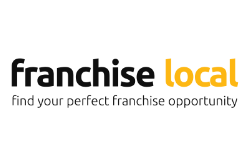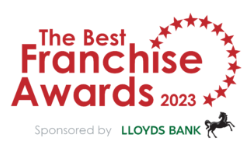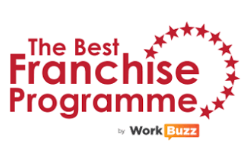A well-planned real estate strategy for premise based franchises is key for successful growth and directly affects profitability as well as overall brand control and consistency.
The two most common property structures adopted in franchise transactions are subleasing and direct leasing models. Franchisor and franchisees should be aware of what these entail and the pros and cons of each model.
Key elements of the sublease Model
In a sublease structure the franchisor takes a headlease of the property before sub-letting to the franchisee. The sublease usually reflects the terms of the headlease and the franchisee will take occupation of the property paying all rent directly to the franchisor who then pays this to the landlord. The sublease and franchise agreement are separate but typically interlinked, with the franchise agreement including a right for the franchisor to terminate the sublease if it terminates the franchise agreement.
This model is often used by franchisors wishing to maintain a high level of control and where locations are integral to the franchised business’ success. This helps a franchisor to fend off competitors in the real estate market for that location and ensure that on termination of the franchise agreement the premises revert back to the franchisor for the use of the brand.
Key elements of the direct lease Model
Alternatively, a franchisor may take a hands off approach permitting the franchisee to take a direct lease with the landlord. Franchisors often favour this approach if the property is less valuable to ultimate success, is a less competitive site or the franchisee is an established franchisee. As the lease is directly with the landlord, the franchise agreement tends not to be interlinked. If the franchise agreement terminates, the lease may remain in place leaving the franchisee obliged to continue paying rent and complying with its lease obligations.
Key considerations in choosing the structure
How important is the property?
A key consideration for both parties is how important the property is to its business. For example, the needs of a fast-food franchise, whose priority is a location in a high footfall area, will be very different to those of professional services-based franchise simply needing an office location.
If the property is in a very competitive area or vital to the success of the franchise, the franchisor is likely to favor the sublease model. By choosing this model the franchisor retains the site even if the franchisee’s business fails or the franchisor/franchisee relationship sours.
Even if a direct lease model is chosen a franchisor can take steps to try to ensure the location is retained if the franchise agreement terminates. The franchise agreement can grant the franchisor an option to take an assignment of the lease on expiry or termination of the franchise agreement. However, the assignment will usually be subject to landlord’s consent which can be a lengthy and expensive process and may delay installing a replacement franchisee. To help avoid this risk an option deed can be entered into at the outset with the franchisee and the ultimate landlord which secures in advance landlord’s consent to an assignment or grant of the lease to the franchisor on termination of the franchise agreement. But many landlords are reluctant to commit to an option deed up front.
Securing terms of the lease
Where a franchisor would wish to take over the premises on a termination then it will usually want to ensure it has secured appropriate terms in the lease. A sub lease model grants a franchisor far greater control over the lease negotiations both at the outset and on renewal.
However in the direct lease model, the lease renewal process is outside the franchisor’s control and it is the franchisee who is usually in the driving seat in terms of negotiations with the landlord. For more experienced or well established franchisees (perhaps with more lease negotiation experience than the franchisor) this can be a real advantage and if they are a good tenant they may be able to negotiate more favorable terms at renewal rather than having to take a sublease that they had no input into negotiating.
The disadvantage of the direct lease structure to the franchisor is that they have minimal input and control over the renewal terms and they may, in the future, have to take an assignment of a lease they did not negotiate.
Strength of legal covenant
Often the franchisor’s covenant strength will be better than that of a franchisee as franchisees typically incorporate a new company to acquire the franchise rights. This however can create issues in negotiations with a landlord who will often prefer to let to a more established and financially strong company and may therefore offer more favorable terms to a franchisor who usually has greater financial credentials than a newco. If a franchisee trading through a newly formed company opts for the direct lease model it may have to offer the landlord greater security in the form of a personal guarantee or a rent deposit and may struggle to negotiate better terms.
Costs
The sublease model can be more costly than a direct lease model and will increase the initial fees involved. This is because fees will be incurred and stamp duty payable in respect of both the main lease and the sublease. These costs are often borne by the franchisee. There may also be legal costs to pay as the franchisor will usually wish to negotiate the terms of the head lease and pass these on to the franchisee who may have no ability to input into those terms.
How high is the risk?
Franchisors and franchisees need to understand where liability sits in each structure and the level of associated risk.
With the sublease model, if the franchisee is unable to pay the rents, the franchisor will still be liable to the landlord under the headlease and may not be able to recoup these from the franchisee if they become insolvent. There are ways to mitigate this risk e.g. building in a property management fee, personal guarantees, deposits etc but it is still a potential financial exposure. If the franchise concept is in high demand, a franchisor may be less concerned about exposure to unpaid rent from an insolvent franchisee if it can quickly replace the franchisee. But in a less competitive market the franchisor may be left paying rents with no income from the site. The ultimate exposure of owning (in effect) a property portfolio may be considered too high a risk for some.
Similarly, Franchisees should consider the financial strength of the franchisor in the sublease model as they must rely on the franchisor to pay all rents to the landlord. If the franchisor fails to do so the franchisee may be a perfect tenant but may still be forced to leave the property if the franchisor fails to comply with its obligations.
With direct leasing all liability sits directly with the franchisee. Whichever model is chosen a level of trust must be built between the parties.
Conclusion
With the increase in quick service restaurants in the UK there is greater competition on high-streets to obtain key trading sites with the right planning permission. Some are turning to dark kitchens as a way to expand without the expensive real estate footprint but this is usually part of an overall strategy and real estate remains a key issue. But competition for office based sites is decreasing. This could benefit those franchise systems only requiring office premises allowing both parties the potential to secure more favorable terms than historically.
Unless a franchisee is well established with a trading history it is unlikely to have much say in the chosen structure of the franchise and may have minimal ability to influence change. However, it is important for franchisees to understand the liability they are taking on and what implications this may have on their risk appetite and overall growth plan.
Whilst the property structure is an important consideration when establishing and growing a franchise it is only one of many factors that impact on the overall success of the franchise.

































